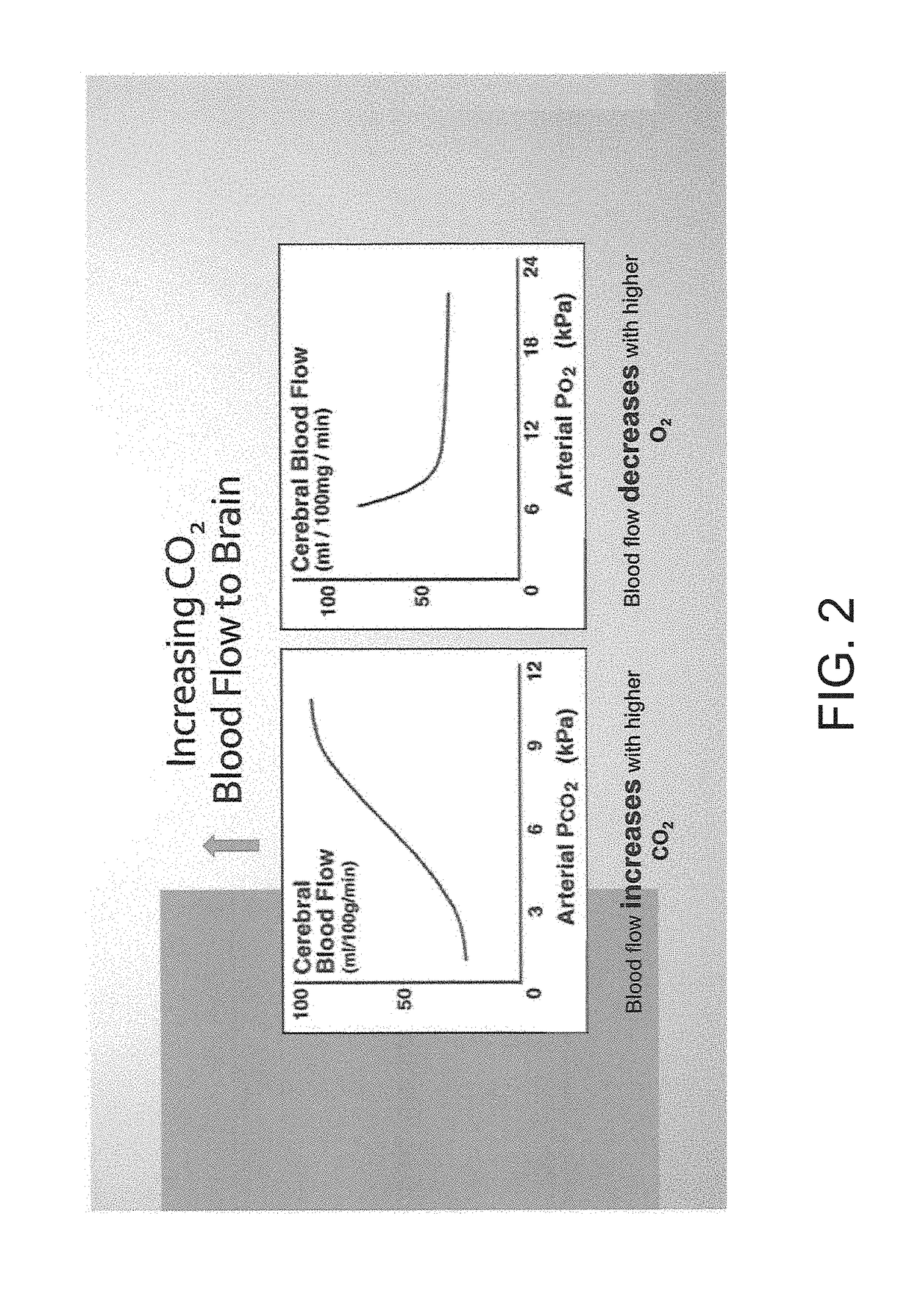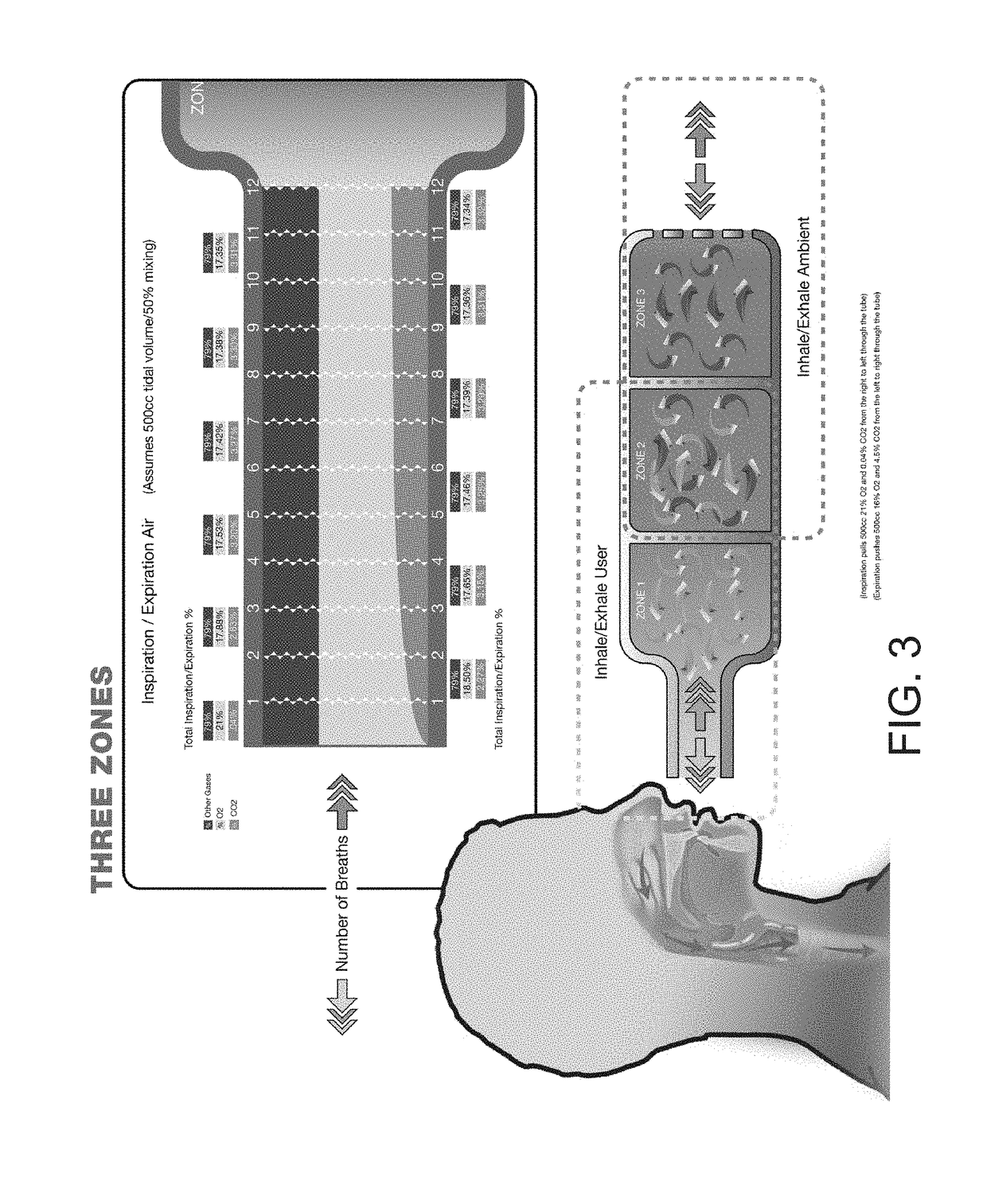Method to Reduce Slosh Energy Absorption and its Damaging Effects Through the Reduction of Inelastic Collisions in an Organism
a technology of inelastic collision and slosh energy, which is applied in the direction of respirators, applications, tetracycline active ingredients, etc., can solve the problem that the anatomic “dead space” is not easily available for rebreathing, and achieve the effects of reducing the risk of sustaining a traumatic brain injury, and increasing the partial pressure of carbon dioxide (co2)
- Summary
- Abstract
- Description
- Claims
- Application Information
AI Technical Summary
Benefits of technology
Problems solved by technology
Method used
Image
Examples
Embodiment Construction
[0052]For the purposes of promoting an understanding of the principles of the disclosure, reference will now be made to the embodiments illustrated in the drawings and described in the following written specification. It is understood that no limitation to the scope of the disclosure is thereby intended. It is further understood that the present disclosure includes any alterations and modifications to the illustrated embodiments and includes further applications of the principles disclosed herein as would normally occur to one skilled in the art to which this disclosure pertains
[0053]Various embodiments described below may locally alter, elevate, or temporarily maintain an altered physiology of an organism to reduce the likelihood of energy absorption through slosh whereby the coefficient of restitution (r) is increased. The coefficient of restitution (r) indicates the variance of an impacting object away from being a complete total elastic collision (an (r) of 1.0=no energy transfe...
PUM
| Property | Measurement | Unit |
|---|---|---|
| volume | aaaaa | aaaaa |
| weight | aaaaa | aaaaa |
| volume | aaaaa | aaaaa |
Abstract
Description
Claims
Application Information
 Login to View More
Login to View More - R&D
- Intellectual Property
- Life Sciences
- Materials
- Tech Scout
- Unparalleled Data Quality
- Higher Quality Content
- 60% Fewer Hallucinations
Browse by: Latest US Patents, China's latest patents, Technical Efficacy Thesaurus, Application Domain, Technology Topic, Popular Technical Reports.
© 2025 PatSnap. All rights reserved.Legal|Privacy policy|Modern Slavery Act Transparency Statement|Sitemap|About US| Contact US: help@patsnap.com



